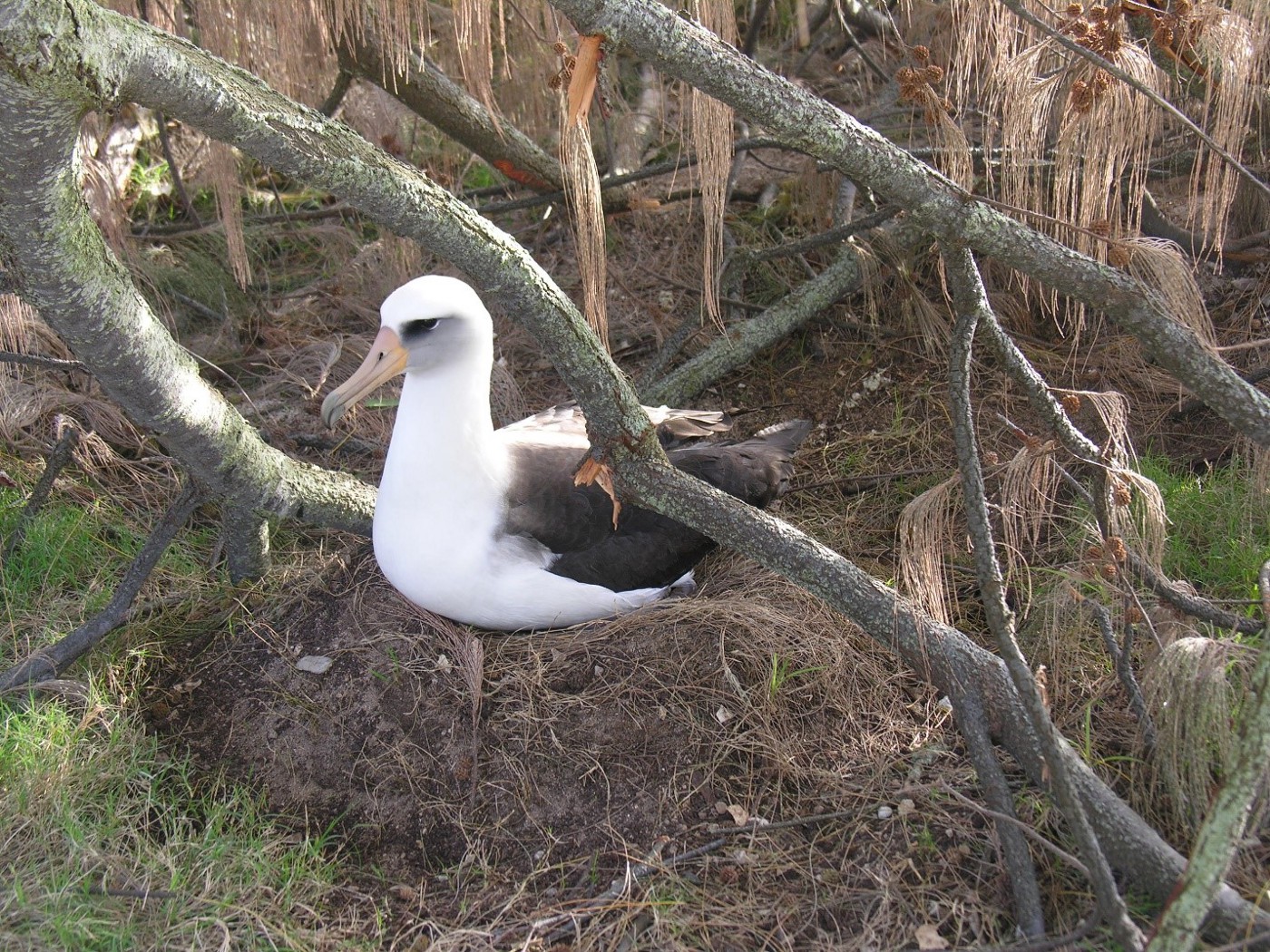 “A large ironwood branch falls on both sides of perhaps the luckiest of albatross nests at Midway Atoll during the winter storms. Hundreds of ironwood branches fell during the winter storms at Midway Atoll during December and early January, and several branches unfortunately crushed many albatross eggs”; photograph by Pam Repp, USFWS
“A large ironwood branch falls on both sides of perhaps the luckiest of albatross nests at Midway Atoll during the winter storms. Hundreds of ironwood branches fell during the winter storms at Midway Atoll during December and early January, and several branches unfortunately crushed many albatross eggs”; photograph by Pam Repp, USFWS
In a year when World Albatross Day on 19 June will be marked with the theme of “Climate Change”, increased winter storms thought due to climate change have been impacting Laysan Albatrosses Phoebastria immutabilis (Near Threatened) and other seabirds that breed on USA’s Midway Atoll in the low-lying North-western Hawaiian Islands.
“Since December 1, 2021 Midway Atoll has been experiencing repeated high-wind storm events, some containing winds over 50 miles per hour [80 km/h] that have impacted several species of seabirds and some of the World War II era buildings. Waves have overtopped seawalls and invaded the beaches, causing a large number of nest failures from eggs being washed away or nests being flooded. Hundreds of nests and eggs have been impacted. Falling trees and large branches have killed adult albatross and eggs”.
The low-lying islands and atolls in the Monument are extremely vulnerable to sea level rise, with some low-lying islands averaging only 3.2 meters in elevation. Sea level at Midway Atoll rises at a rate of five millimeters per year, which is faster than the global average. This makes the impact of storms all the greater.

A Laysan Albatross nest near missed by fallen branches from Ironwood Casuarina equisetifolia trees; photograph by Pam Repp, USFWS
The majority of seabirds in the Pacific Islands nest[s] at or near sea level, regardless of the maximum elevation of the island on which they nest. For albatrosses and other seabirds, some years are calmer than others when wintering at Midway Atoll. This winter has been a rough one for some seabirds with more frequent storms than usual at Midway Atoll. Even when exposed to winds over 50 miles per hour winds and torrential rain, albatrosses patiently sit through storms while devotedly incubating their eggs. Despite their fearless paternal instincts, some birds aren’t as lucky and won’t make it through the storms.
Sea level rise and surge from storms and tsunamis put seabird nests at risk of flooding. In the winter of 2011 a tsunami wreaked havoc on Midway Atoll and nearly 300,000 albatrosses’ nests were destroyed [click here]. Climate change and consequent processes such as increased storm intensity are difficult to predict accurately and may prove impossible to manage.
Midway Atoll is ecologically significant on a global scale. Altogether, nearly three million birds nest at Midway Atoll Refuge and Memorial each year, including the world’s largest population of albatrosses, nunulu (Bonin petrels), and endangered Laysan ducks.
To stem the loss of nesting habitat for seabirds, whose primary nesting islands in the Northwestern Hawaiian Islands may be lost to sea level rise, Pacific Rim Conservation and other partners are working with the Monument co-managers to create new, safe nesting sites for them on high-islands. Such proactive partnerships created to establish more secure seabird colonies on high islands within the historical nesting range, provide hope for these seabirds to not disappear from the Hawaiian Islands.”
Read more here and see an earlier post in ACAP Latest News on falling trees affecting breeding Laysan Albatrosses.
John Cooper, ACAP Information Officer, 25 January 2022

 Español
Español  English
English  Français
Français